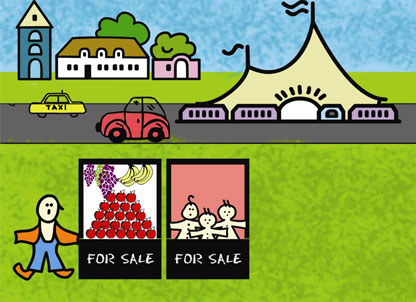Child Trafficking

Things to know
- Child trafficking is a violation of the fundamental rights.
- Trafficked children can be exploited sexually, physically, emotionally and may end up as child labourers.
- Trafficking can be at local, inter-state or international level. Often organized criminal gangs are involved in trafficking of the victims
Combating child trafficking
- Regular checking at Railway station, Interstate bus terminals, Border check points to prevent child trafficking.
- Sensitization and providing in-depth knowledge on the issue to the concerned officers and other stakeholders.
- Regular exchange of information among the law enforcement agencies of different states regarding the trafficking of the children, traffickers etc
- Integrated efforts of the law enforcement agencies, NGOs, department of health, media to combat child trafficking.
- Regular supervision and monitoring of the employment and placement agencies.
Risk assessment
International Organization for Migration in its handbook on 'Direct assistance on Trafficking' has discussed generic and specific assessment of the risks while providing services to the victims of trafficking. The assessment of risk is important to develop a risk management plan enhancing security of victim and the professionals involved with the victims of child trafficking. Generic risk assessment
Generic risk assessment
These are generic indicators that can give an idea about the level of risk. Following are the indicators that can be used for risk assessment
- The extent and impact of trafficking in the place.
- The extent to which trafficking is controlled by organized criminal groups.
- The capacity of law enforcement agencies.
- The extent of corruption.
- The level of governmental commitment and support trafficking.
Specific risk assessment
- All escaped victims are at risk from the traffickers.
- The risks are magnified where victims cooperate with the traffickers.
- Further, the risks are increased when the traffickers become aware of the victims cooperation.
- Victims are exposed to risks during planned assistance at the Courts, when they visit the hospitals, shelter homes etc. In case the traffickers are aware of these moments, they or their known ones may have direct contact with the victims.
What should I do when I see a trafficked child?
- The police personnel can register the case under IPC, Juvenile Justice Act and Immoral Traffic Prevention Act.
- The police personnel are required to register FIR against the trafficker and produce the child before Child Welfare Committee.
- The police personnel can contact Missing Person Squad (MPS) to seek more information in case the MPS had been informed about the child before.
- Involving of professionals like psychologists, social workers, child specialists etc where possible to create a sensitive environment for the trafficked child.
Caution!
Inform the police as soon as possible if it is suspected that the child traffickers are attempting or have attempted to intimidate/harass/contact the victim. Following may be the indicators.These are generic indicators that can give an idea about the level of risk. Following are the indicators that can be used for risk assessment
- Anonymous and threatening phone calls.
- Repeated blank calls.
- Repeated prolonged appearance outside shelter homes of unknown person or vehicles.
- Following of the victim or a professional associated with the victim of child trafficking.
Important legislations
- Immoral Traffic Prevention Act.
- Juvenile Justice Act.
Refernces
- South Asian Regional Association for Regional Cooperation , SAARC Convention on preventing and combating trafficking in women and children for prostitution, 2002.
- International Organization of Migration, 'The IOM handbook on direct assistance for victims of trafficking', International Organization of Migration, Switzerland, 2007.
- http://www.childtrafficking.com